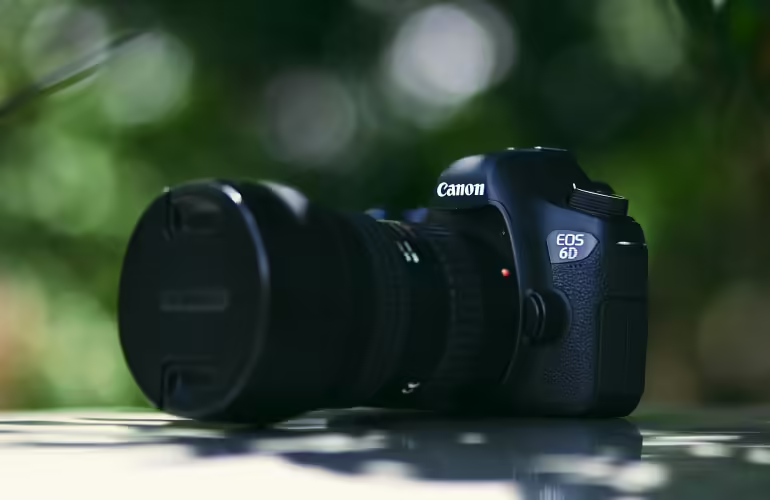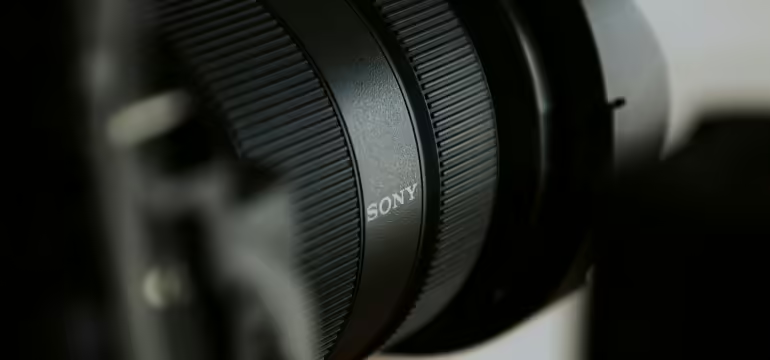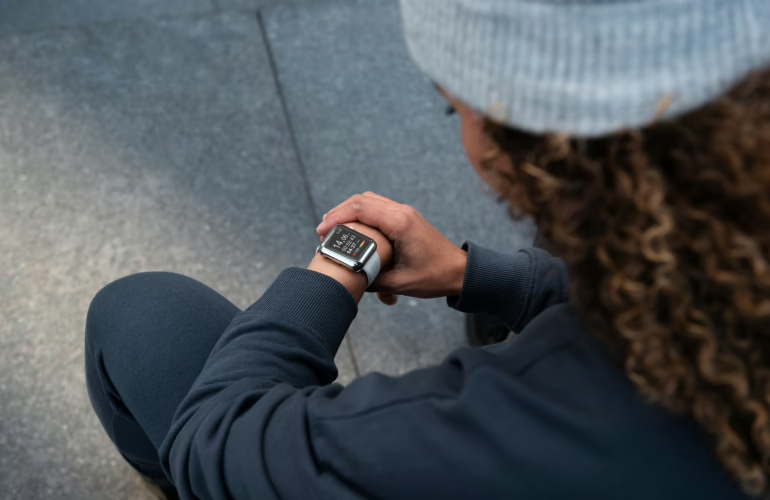Advertising Disclosure
Best Camera for Photography 2024: Top Picks and Reviews
In the evolving world of photography, this year has brought us many products. You may be a budding enthusiast or a pro. However, it doesn’t matter. Choosing the right camera is crucial to capturing your vision. With many features like megapixel counts and autofocus, the arena can be overwhelming.
This guide aims to simplify your search by presenting the types of cameras for photography. Our list is tailored to various genres. We will go from capturing stunning landscapes to immortalizing precious moments. We’ll explore the best options to suit your individual needs and budget. Join us and discover the perfect tool to boost your creative journey.
Key Features to Consider When Choosing a Camera
Several essential features demand careful consideration. They will impact your ability to capture great images and achieve desired outcomes. Let’s explore some of the most crucial aspects to keep in mind when choosing the best camera brand:
- Sensor Size. The sensor is the heart of a device. It’s responsible for converting light into digital data. A larger sensor generally translates to better low-light performance, a wider dynamic range, and a shallower depth of field. Full-frame tools boast the largest sensors. They’re followed by APS-C and Micro Four Thirds formats.
- Megapixel Count. They determine the number of pixels in a picture. Higher counts might seem appealing. However, it’s vital to understand that more megapixels don’t necessarily equate to better quality. The sensor’s overall performance and image processing play a vital role. For most photographers, a count between 12 and 24 is sufficient for high-quality prints.
- Autofocus. This system has made high-resolution cameras significantly more accessible. Modern tools offer many autofocus modes. It includes single-point, zone, and continuous tracking. Consider your preferred shooting style and the types of subjects. If you shoot fast-moving subjects, you’ll want a camera with advanced continuous autofocus capabilities.
- ISO Range. ISO sensitivity measures the ability to shoot pictures in low-light conditions. A wider range allows you to shoot in darker environments without relying heavily on flash. However, higher ISO settings can introduce noise (graininess) into your pictures.
- Image Processor. The processor handles raw picture data. It converts it into the final picture file. A powerful image processor can boost picture quality. It’s especially in areas like noise reduction and color accuracy. Look for cameras with advanced image processors.
- Lens Compatibility. The camera body is essential. However, the lenses you choose will impact your style and creative possibilities. Consider the types of pictures you enjoy and the focal lengths that suit your needs. Some cameras offer interchangeable lenses. It allows you to expand your creative horizons.
- Ergonomics and Controls. New camera technologies are vital. However, a simply comfortable fit in your hand is also crucial. It’s for enjoyable shooting experiences. Pay attention to the grip, button placement, and overall ergonomics. Consider weight and size.
The Role of Sensor Size in Image Quality
Sensor size plays a pivotal role in determining image quality. Here’s a breakdown of how sensor size affects various aspects:
- Depth of Field. A larger sensor allows for a shallower depth of field. It means you can isolate your subject from the background more effectively. This creates a beautiful bokeh effect, where the background appears blurred and out of focus. This is particularly desirable for portrait style and macro shots.
- Low-Light Performance. Larger sensors gather more light. It results in better low-light capability. This means you can capture cleaner pictures with less noise in dimly lit environments. This is an advantage for night pictures, indoor events, and challenging lighting conditions.
- Dynamic Range. The best cameras of 2024 and their ability to capture details. It’s in both bright and dark areas of a scene. Larger sensors tend to have a wider dynamic range. It allows you to save highlights and shadows more effectively. This is crucial for landscape pictures. There, scenes often contain a wide range of tonal values.
Understanding Megapixels: How Many Do You Really Need?
Misconceptions About Megapixels:
- More Megapixels = Better Quality. Higher counts can provide more detail. However, picture quality depends on factors like sensor size, lens capability, and image processing. A tool with a larger sensor and excellent optics can produce superior pictures even with a lower megapixel count.
- Megapixels Determine Print Size. Higher megapixel counts allow for larger prints. However, the quality of the print also depends on the sharpness and the printer’s capabilities. A well-composed and sharp picture can produce excellent prints even at lower resolutions.
The ideal count depends on your specific needs and intended use. Here are some guidelines for new cameras 2024:
- General Photos. For most photographers, a megapixel count between 12 and 24 is sufficient for high-quality prints and web sharing.
- Landscape Style. If you frequently shoot landscapes and plan to create large prints, a higher count can be beneficial.
- Professional Use. If you’re a professional who needs the highest level of detail and plans to create very large prints. Then, opt for tools with even higher megapixel counts.
- Smartphone Photos. Modern smartphones often have megapixel counts exceeding those of traditional compact tools. However, the picture quality is influenced by sensor size, lens quality, and computational techniques.
Top Camera Models for Photography in 2024
The year 2024 has witnessed a remarkable surge in technologies. It offers photographers a diverse range of options to capture their vision. So, what is the best camera brand? We will go from professional-grade DSLRs to innovative mirrorless ones. Our curated list highlights some of the best models, catering to various styles and budgets.
Best DSLR Cameras for 2024
DSLRs are a popular choice among photographers who value:
- Robustness.
- Lens compatibility.
- Exceptional picture quality.
Here are some of the top models released in 2024:
- Canon EOS R5. This one offers an impressive 45-megapixel sensor. It has 8K video and 5-axis stabilization. It has fast autofocus and excellent low-light performance. This makes it a versatile choice.
- Nikon D850. This one of the top camera brands is renowned for its exceptional quality. The Nikon D850 features a 45.7-megapixel sensor. It has a wide dynamic range and a rugged build. It has impressive low-light capabilities and fast continuous shooting. It makes it ideal for landscape, portrait, and sports photos.
- Sony Alpha 1. It boasts a staggering 50.1-megapixel sensor, 8K video recording, and a blazing-fast autofocus system. Its incredible burst shooting speed and 5-axis in-body picture stabilization make it a top choice. It’s especially for action and sports photographers.
Leading Mirrorless Cameras in 2024
What kind of camera should I get? What about mirrorless options? They have gained significant popularity. It’s due to their lighter weight, faster shooting speeds, and advanced video capabilities. Here are some of the leading choices of 2024:
- Canon EOS R6. This device features a 20-megapixel sensor, 4K video, and 5-axis in-body picture stabilization. This one has excellent autofocus performance and fast continuous shooting. It makes this tool a versatile option for many photo genres.
- Sony Alpha 7 IV. It has a 33-megapixels, 4K video, and a 5-axis in-body picture stabilization. Its excellent low-light performance and impressive battery life make it a popular choice for both stills and video.
- Fujifilm X-T4. This APS-C mirrorless tool offers a 26.1-megapixel sensor, 4K video, and a 5-axis in-body picture stabilization. It has a retro design, excellent color reproduction, and unique film simulation modes. It makes it a favorite among street photographers and enthusiasts.
When choosing the most powerful camera, consider your specific needs, budget, and preferred features. Sensor size, autofocus performance, lens compatibility, and video capabilities should be carefully evaluated.
Innovative Technologies in New Cameras
The 2024 has seen a remarkable surge in cameras for pictures and video technology. It introduced groundbreaking innovations that redefine the landscape of photography. Let’s explore some of the most innovative technologies that have emerged in new models:
- Artificial Intelligence (AI) Enhancements. This new camera technology has revolutionized various aspects of photos. They are from scene recognition to picture optimization. New models have sophisticated AI algorithms. Those can automatically detect and adjust settings based on the subject matter. This includes features like automatic scene recognition. It optimizes settings for specific scenarios such as portraits, landscapes, and sports. Also, AI noise reduction algorithms can improve picture quality in low-light conditions. It reduces graininess and preserves details.
- Improved Stabilization. Stabilization has come a long way. It enables photographers to capture sharper pictures and smoother videos. It’s even in challenging conditions. New models often feature advanced stabilization systems that can compensate for shake. It makes it easier to shoot handheld in low-light or while zooming in. Some models even offer in-body picture stabilization (IBIS). It can work in conjunction with lens-based stabilization for even more effective results.
- Advanced Video Features. Video capabilities have become increasingly important in modern cameras photographers use. New models often offer features like 4K and even 8K video recording. They provide exceptional picture quality for filmmakers and content creators. Also, advanced video features such as high-speed frame rates, log color profiles, and time-lapse capabilities have made tools more versatile for capturing dynamic and creative footage.
- Computational Photos. Computational photo techniques leverage the power of image processing. It’s to enhance picture quality and create unique effects. New models often use computational photos. It’s to achieve features like HDR (High Dynamic Range). It combines multiple exposures to capture a wider range of tones. Also, computational photos can create artificial bokeh effects. It simulates the shallow depth of field typically achieved with larger lenses.
How to Choose the Best Camera for Your Photography Needs
Choosing the best photo camera can be a daunting task. It’s because there are many options on the market. To make a good choice, consider your goals and needs. And here’s a tips to help you make the best choice for your needs:
- Define Your Style. Identify the types of photos you enjoy or plan to pursue. This will help narrow down your options. Consider whether you prefer landscape, portrait, street, sports, or wildlife photos. Each genre has specific requirements. It’s in terms of sensor size, autofocus performance, and lens compatibility.
- Determine Your Budget. Set a realistic budget for your purchase. Remember that the tool’s body is just one part of the equation. You’ll also need to buy lenses, accessories, and potentially extra memory cards. Consider your long-term goals. And consider how much you’re willing to invest in your equipment. Don’t buy top camera brands. Just start with something simpler to learn the basics.
- Sensor Size and Format. The sensor size plays a crucial role in picture quality. Full-frame options offer the largest sensors. They provide excellent low-light performance. They also have a good dynamic range and shallow depth of field. APS-C and Micro Four Thirds formats are smaller and more affordable. However, they may have limitations in certain areas. Consider your budget and the specific requirements of your photo style.
- Megapixel Count. While megapixels are important, focus on picture quality rather than solely on the megapixel count. What camera should you buy? A tool with a larger sensor and excellent optics can produce superior pictures even with a lower megapixel count. Consider your printing needs and the intended use of your photos.
- Autofocus System. Autofocus performance is crucial for capturing sharp pictures, especially when shooting fast-moving subjects. Consider the type of photos you do and the autofocus modes offered by different models. If you shoot a lot of action or wildlife, a tool with advanced continuous autofocus capabilities is essential.
- Video Capabilities. If video is an important aspect of your photography, evaluate the video features. Look for tools offering high-resolution video recording, good audio quality, and advanced features.
Ergonomics and Controls. While the most powerful camera in the world might seem like a great option, consider if you really need that level of technology. However, a comfortable tool that fits well in your hand is crucial for enjoyable shooting experiences. Consider the grip, button placement, and overall ergonomics. Try out different models to find one that feels right for you.







